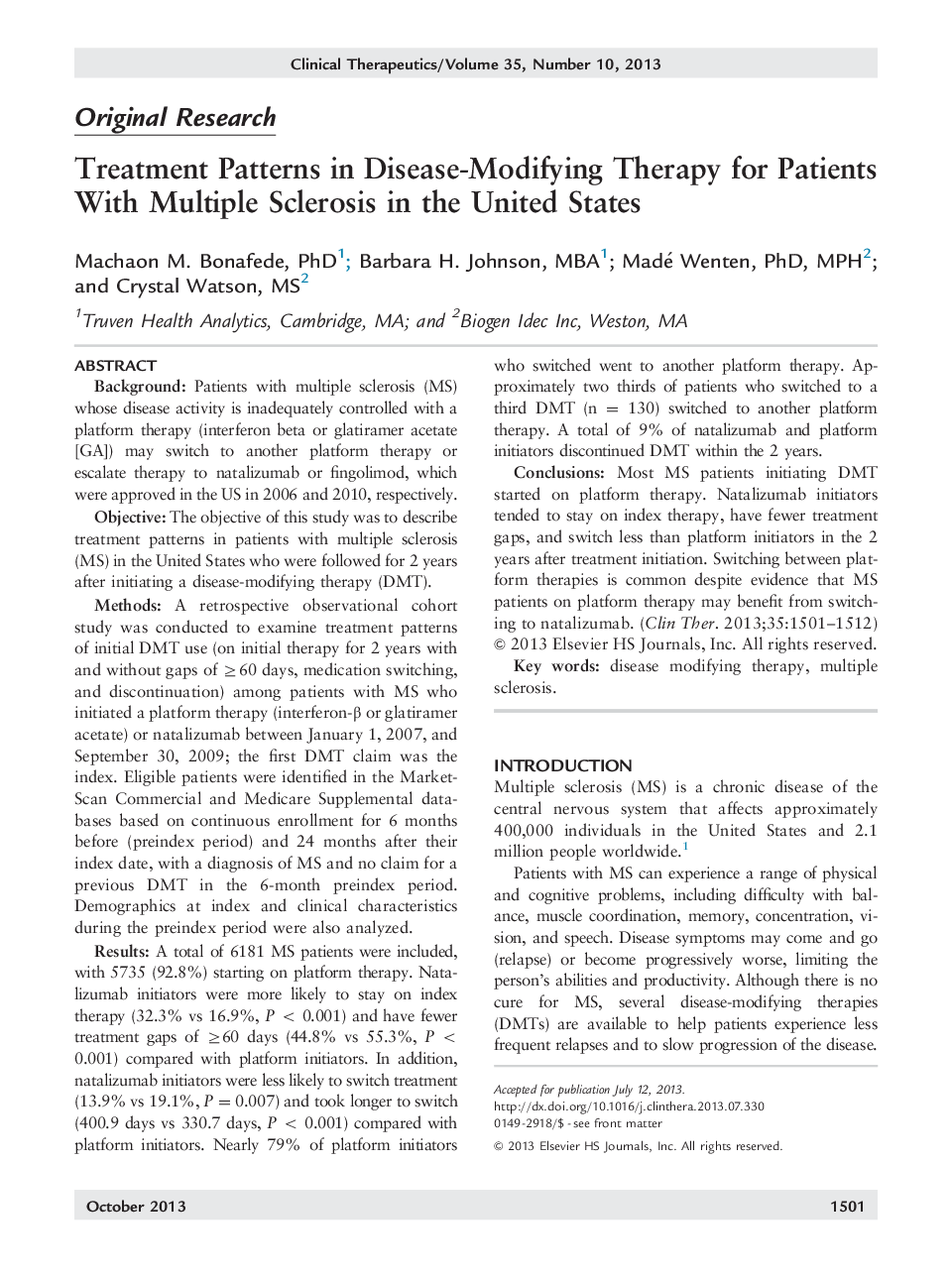| Article ID | Journal | Published Year | Pages | File Type |
|---|---|---|---|---|
| 5825622 | Clinical Therapeutics | 2013 | 12 Pages |
BackgroundPatients with multiple sclerosis (MS) whose disease activity is inadequately controlled with a platform therapy (interferon beta or glatiramer acetate [GA]) may switch to another platform therapy or escalate therapy to natalizumab or fingolimod, which were approved in the US in 2006 and 2010, respectively.ObjectiveThe objective of this study was to describe treatment patterns in patients with multiple sclerosis (MS) in the United States who were followed for 2 years after initiating a disease-modifying therapy (DMT).MethodsA retrospective observational cohort study was conducted to examine treatment patterns of initial DMT use (on initial therapy for 2 years with and without gaps of â¥60 days, medication switching, and discontinuation) among patients with MS who initiated a platform therapy (interferon-β or glatiramer acetate) or natalizumab between January 1, 2007, and September 30, 2009; the first DMT claim was the index. Eligible patients were identified in the MarketScan Commercial and Medicare Supplemental databases based on continuous enrollment for 6 months before (preindex period) and 24 months after their index date, with a diagnosis of MS and no claim for a previous DMT in the 6-month preindex period. Demographics at index and clinical characteristics during the preindex period were also analyzed.ResultsA total of 6181 MS patients were included, with 5735 (92.8%) starting on platform therapy. Natalizumab initiators were more likely to stay on index therapy (32.3% vs 16.9%, P < 0.001) and have fewer treatment gaps of â¥60 days (44.8% vs 55.3%, P < 0.001) compared with platform initiators. In addition, natalizumab initiators were less likely to switch treatment (13.9% vs 19.1%, P = 0.007) and took longer to switch (400.9 days vs 330.7 days, P < 0.001) compared with platform initiators. Nearly 79% of platform initiators who switched went to another platform therapy. Approximately two thirds of patients who switched to a third DMT (n = 130) switched to another platform therapy. A total of 9% of natalizumab and platform initiators discontinued DMT within the 2 years.ConclusionsMost MS patients initiating DMT started on platform therapy. Natalizumab initiators tended to stay on index therapy, have fewer treatment gaps, and switch less than platform initiators in the 2 years after treatment initiation. Switching between platform therapies is common despite evidence that MS patients on platform therapy may benefit from switching to natalizumab.
